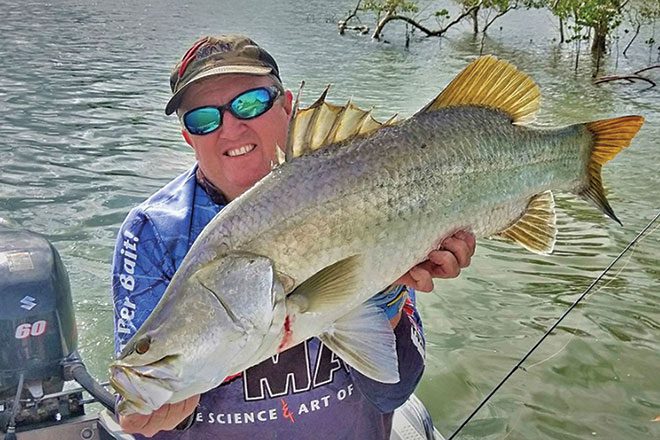The Great Sandy Strait is in Queensland, amasses over 600sq km and runs 70km in length, separating mainland Queensland from World Heritage Listed K’gari, approximately 250km north of Brisbane.
In his seasonal rundown of fishing the river and estuary systems in the region, Paul Chew kicks off with the winter bite.
Because the size of the tides have dropped off in winter, I try to fish the bigger tides – looking for some movement to try to condense the bait schools and dirty the water slightly also.
If I fish the neap tides, I’ll chase slower moving fish such as flathead, squid and maybe a barramundi.
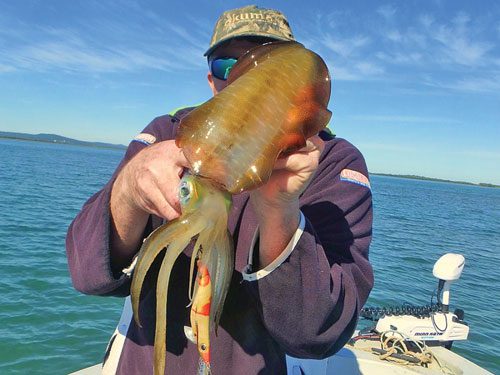
Plenty of common bread and butter species start to move about, with sand and winter whiting, tailor, bream, grunter and threadfin salmon all making a move into the estuaries.
Several species of trevally and smaller queenfish will invade creeks and rivers – making it nearly impossible to catch anything else during some sessions.
Towards Hervey Bay, squire, snapper and a few school mackerel will be biting mostly on the larger tides.
In the lower end of the strait, there will be large longtail tuna feeding on small glassfish.
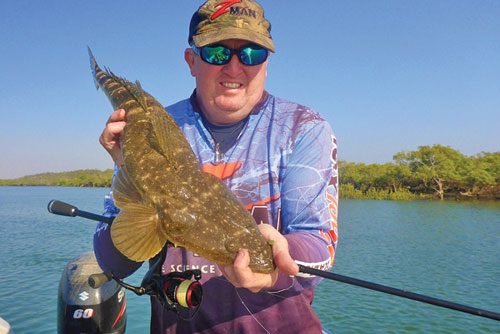
Entice a bite by matching the hatch.
I usually try for a high tide at about 10am – it’s daylight at about 6am, so I’ll be fishing at 6:30am with the incoming tide.
Normally, I’ll have rigged a small Z-Man GrubZ, 4” StreakZ Curly TailZ, 3” Scented ShrimpZ and a squid jig – covering most bases and allowing for a quick change if I spot something that I need to cast to.
On the smaller lures, I tie on some 10lb Platypus Stealth FC Fluorocarbon Leader and the same on my squid outfit.
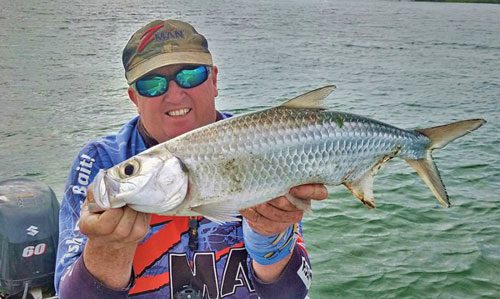
On the larger plastics, one will be 15lb Stealth FC and the other 20lb – in case I have time to swap outfits when I spot a bigger fish.
By far my favourite type of winter fishing is cruising the flats in 1m of water under electric power and sight casting fish.
While not the most productive fishing, it’s very rewarding when you get to watch a fish or squid eat your lure.
Light lines and leaders are the order of the day, with 20lb being the heaviest I fish normally.
To counter that, any bigger fish I land don’t have to contend with the barotrauma associated with deep-water jigging.
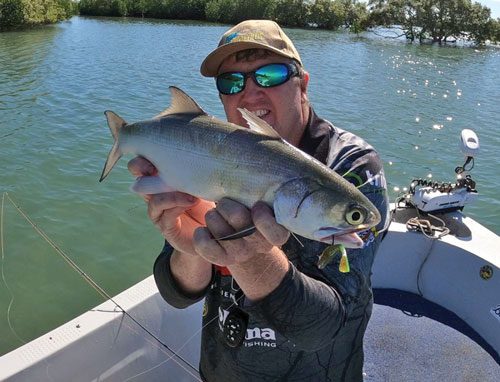
The key to finding fish is to find bait or structure in the form of sand ridges, mangroves, islands and even yabby beds, which breaks up the monotony of endless sand.
Looking for an easy feed, fish will be hanging around fish aggregation places on a rising tide, and in both island and mainland creeks.
In the creeks, look for eddies, backwaters, landslides and rocky ledges – this is where bait will congregate.
Remember, schools of grunter, trevally and queenfish may cover several kilometres of creek in a tide.
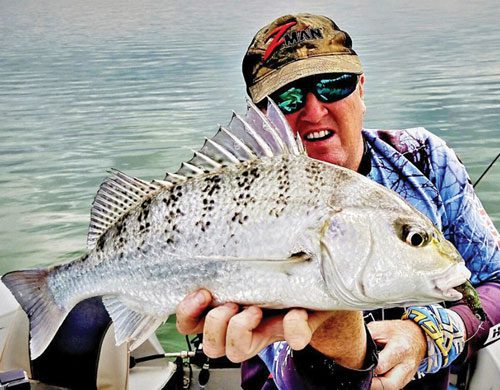
Most fish will be in the bottom metre of a creek in the Sandy Straits, so you’re better to fish a slightly heavier jig head.
My go-to jig heads are the TT Lures HeadlockZ HD in 1/4oz 1/0 size for smaller plastics and 3/8oz 3/0 for the 4” StreakZ Curly TailZ.
In creeks, once you have found a fish, it’s worth staying there on the electric or at anchor and working the area over because most fish in winter are schooling for spawning.
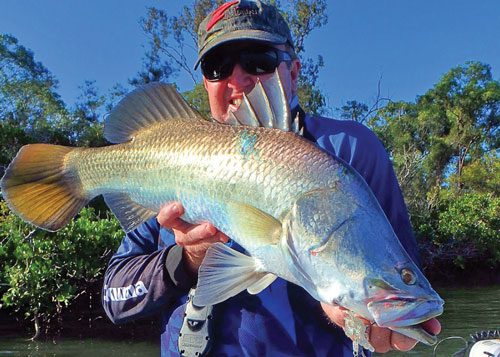
So be mindful to take only what you need for a feed.
In the creeks, concentrate on deeper corners on an incoming tide, and then fish the offshoot creeks and drains on the top of the tide and the first of the run-out.
I’d fish lighter fluorocarbon leader to a maximum of 20lb.
Tight lines and enjoy the winter fishing.
Paul Chew
For Tackle Tactics
 Bush ‘n Beach Fishing Magazine Location reports & tips for fishing, boating, camping, kayaking, 4WDing in Queensland and Northern NSW
Bush ‘n Beach Fishing Magazine Location reports & tips for fishing, boating, camping, kayaking, 4WDing in Queensland and Northern NSW

